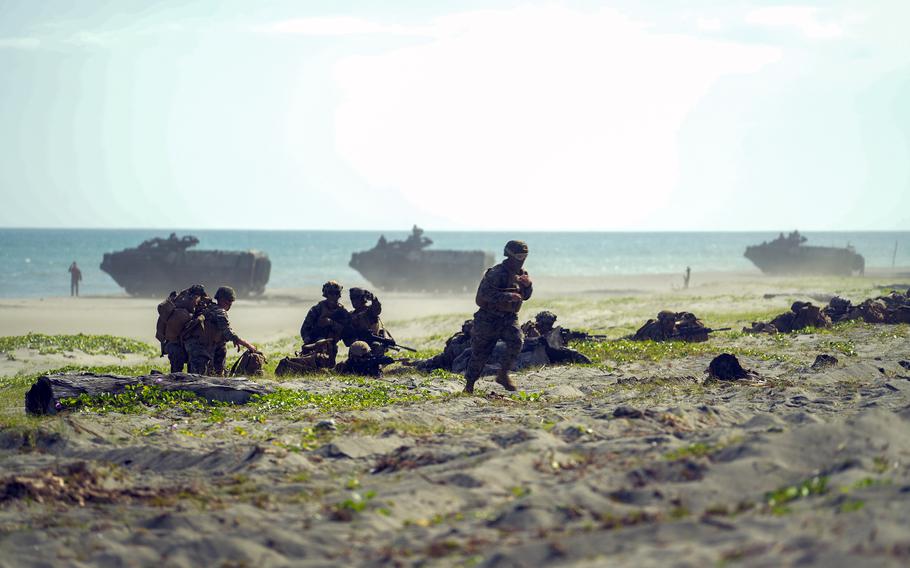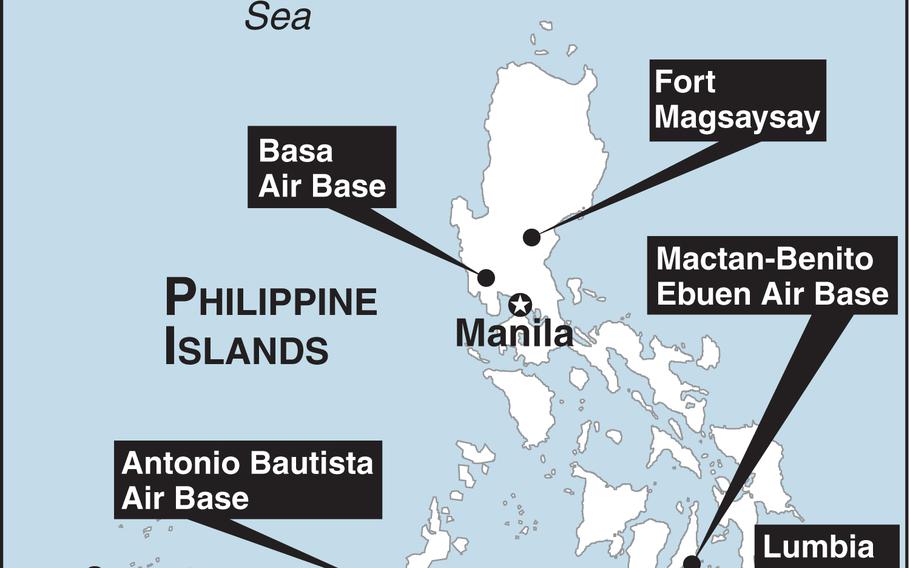
U.S. and Philippine marines and sailors conduct an amphibious landing during Balikatan training in the province of Cagayan, Philippines, March 31, 2022. (Madison Santamaria/U.S. Marine Corps)
Efforts to expand U.S. military access in the Philippines have met opposition from a provincial governor in the country’s north, a Philippine newspaper reported recently.
The Philippine government announced this month it would add four installations to five sites where U.S. forces will have access under the 2014 Enhanced Defense Cooperation Agreement.
One of the new sites may be in Cagayan, a coastal province on the main island of Luzon that’s 300 miles south of Taiwan, according to Carlyle Thayer, an emeritus professor at the University of New South Wales and a lecturer at the Australian Defence Force Academy.
However, Cagayan Gov. Manuel Mamba said an expanded U.S. military presence in his province could expose it to nuclear attack, according to the Manila Standard on Feb. 11.
“Any foreign forces are not welcome here,” he said, according to the newspaper. “This is my personal opinion; at the least, I have to consult our people, though I knew this is the right thing.”
The new sites will be revealed after a consultation process, Philippines Defense Secretary Carlito Galvez Jr. told reporters Feb. 2 in Manila alongside U.S. Defense Secretary Lloyd Austin.
Three will be in the northern Philippines, one each in Zambales and Palawan provinces in addition to one in Cagayan province, Thayer said in a Feb. 2 briefing paper.
People in Cagayan won’t allow conflict with neighbors such as China, Taiwan, Japan or Korea, Mamba told the Standard.
If the national government grants U.S. forces access to a site in Cagayan, Mamba suggested Puga, a 27-square-mile island north of Luzon, according to the report. The island, he said, is home to 2,000 residents who could be evacuated to the mainland in wartime.
“I am not pro-China nor pro-America rather I am pro-Cagayan and do what is best for the populace of the province and I am for our country,” Mamba said, according to the report.
The governor’s position is a hurdle, but opposition to U.S. basing in the Philippines, while vocal, is not extensive, Thayer said in an email Thursday.
Patricio Abinales, a Philippines expert at the University of Hawaii, said Mamba’s comments were “just swagger.” The financial opportunities of hosting U.S. forces would be enough to overcome local opposition, he said.

(Noga Ami-rav/Stars and Stripes)
The Philippines have already agreed to shared use by U.S. forces of five bases: Basa Air Base, Antonio Bautista Air Base, Mactan-Benito Ebuen Air Base, Fort Magsaysay and Lumbia Air Base.
The U.S. in 2015 requested access to Subic Bay and Clark Air Base, Thayer said in September.
The installations, just north of Manila, formed America’s largest overseas military community before both were damaged in the 1991 eruption of Mount Pinatubo and, soon after, returned to the Philippines.
U.S. forces already use both installations regularly.
They may not require a shared-use designation since both are privatized and accommodate commercial access, Jay Batongbacal, director of the University of the Philippines’ Institute for Maritime Affairs and Law of the Sea, said in a Twitter message Thursday.
U.S. military planners focus on the Philippines as they consider dispersing their forces among small islands in the Western Pacific and size up the prospect of a conflict over Taiwan.
For example, members of the Marine Corps’ newly formed 3rd Marine Littoral Regiment practiced expeditionary advanced base operations during the annual Balikatan drills in the Philippines in April.
This month, air forces from the U.S., Japan, Australia and France are training at sites spread across 1,200 miles of the Pacific Ocean, from Iwo Jima to Palau.
U.S. interest in dispersing its forces throughout the Western Pacific will spread risk to more locations, Leland Bettis, director of the Guam-based Pacific Center for Island Security research institute, said in an email Thursday.